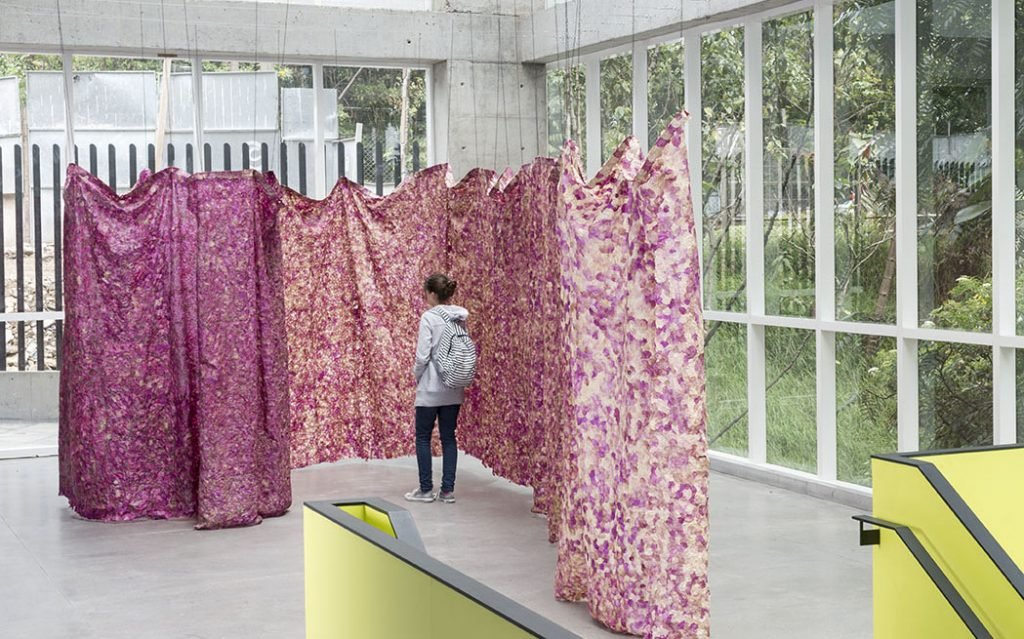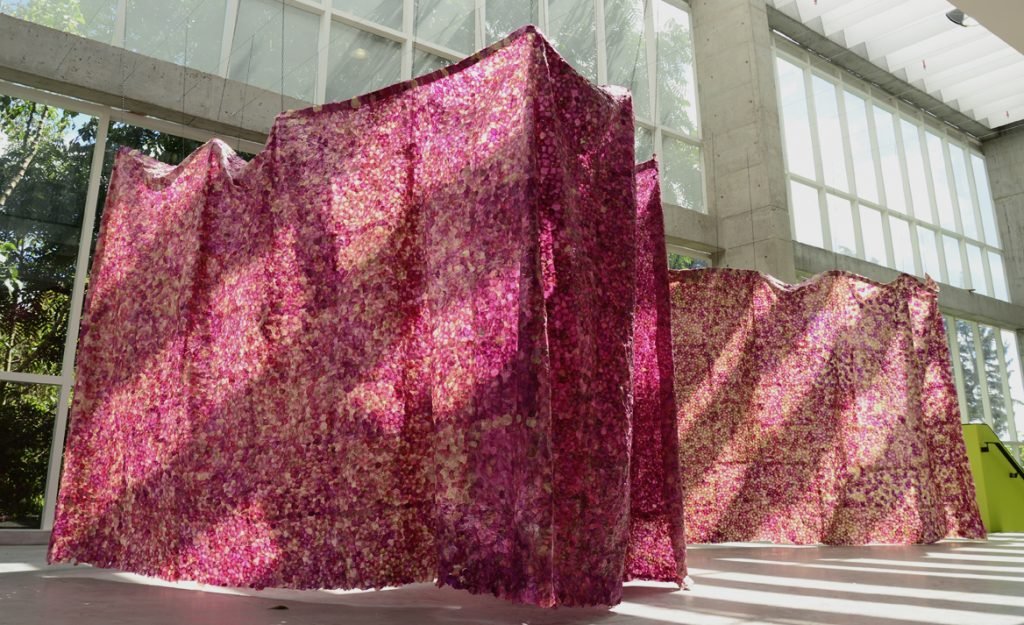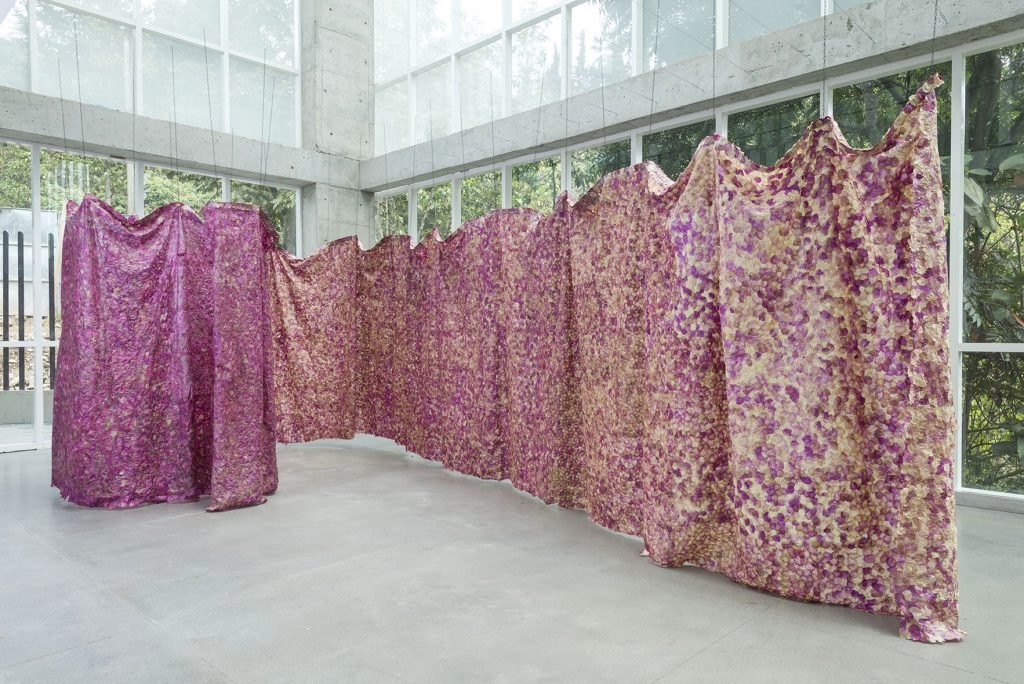Fotografías por Oscar Monsalve
Mi otro lugar 2015
Todo empezó con un simple ejercicio de experimentación en donde quería hacer paletas de color con hojas de eucalipto. Empecé a dividirlos entre colores cálidos y fríos. Pronto me di cuenta del potencial pictórico de este elemento cotidiano. Quise entonces intentar invertir la idea del arte tradicional en donde se usan pigmentos para pintar flores y convertirlo en la idea de usar flores para crear pinturas. Bodegones contemporáneos en donde lo que alguna vez fue aquello que se representó pasa a ocupar el lugar protagonista del material mismo que crea una pintura.
Al encontrar este potencial pictórico empecé a trabajar con el material de manera constaste y el material mismo me llevó a encontrar en este un potencial textil que no había notado, además me encontré a mí misma repitiendo una y otra vez la misma acción. Con esta labor manual, tradicionalmente vista como una labor femenina en donde el acto de repetición mejora los resultados quise llevar al extremo el material y probar su resistencia. Durante el proceso de hacer este manto quise resaltar la importancia del saber artesanal que muchas veces ha quedado relegado. Para esto quise exaltar y exagerar tanto el material como el oficio, en un intento por devolverles la fuerza y liberarlos. El resultado terminó siendo una instalación, un manto florar de 17 metros de largo que se podía recorrer y que cambiaba sutilmente de color día a día.
Este trabajo fue mi tesis de pre-grado de artes plásticas de la universidad de Los Andes. Si es de su interés leer el texto que en ese momento acompañó a la obra esta aquí: https://repositorio.uniandes.edu.co/flexpaper/handle/1992/17472/u713674.pdf?sequence=1&isAllowed=y#page=4
Elsewhere 2015
It all started with a simple experimentation exercise where I wanted to make color palettes with eucalyptus leaves. I started dividing them between warm and cold colors. I soon became aware of this daily element’s potential for creating vivid, colorful imagery. With this, I wanted to reverse the idea of traditional art where pigments are used to paint flowers and instead, focus on using flowers to create pigments and therefore paintings. I wanted to create contemporary still-lifes where flowers were used as the medium to create the painting itself, instead of solely serving as an image to be represented with paint.
After becoming aware of the potential of flowers to create vivid imagery, I began to continuously work with the material and in the process became surprised by its potential applications, particularly as a textile. I found myself gluing the flowers to one another and repeating the same manual action over and over again to connect one to the next. Through this hands-on work, traditionally seen as a woman’s labor of patience and repetition, I wanted to take the material to the extreme and test its resistance. During the process of making this curtain, I began to appreciate artisan knowledge and wanted to emphasize its art, in order to change its connotation as a relegated, tedious task. In order to achieve this, I wanted to exalt and exaggerate both the material and the manual labor, in an attempt to restore their strength and liberate them in the eyes of the public. The result ended up being an installation of a 17-meter-long flower curtain that subtly changed color from day to day.
This work was my undergraduate thesis as a visual artist from the Universidad de Los Andes. If you would like to read the text that, at that time, accompanied this work, please find it here: https://repositorio.uniandes.edu.co/flexpaper/handle/1992/17472/u713674.pdf?sequence=1&isAllowed=y#page=4








